What’s Up?
I’ve been so busy, that despite the beautiful weather in central Florida, I have not gotten down to the lake since I got home from Bonaire.
For details on the late registration discount offer for the third DeSoto IPT, please shoot me an e-mail.
Today is Wednesday 3 May 2023. This blog post took about four hours to prepare. Wherever you are and whatever you are doing, I hope that you too have a great day.
Please remember to use the B&H and Amazon links that are found on most blog pages and to use the BIRDSASART discount code at checkout when purchasing your new gear from Bedfords to get 3% back on your credit card and enjoy free second-day air FedEx. Please, also, consider joining a BAA IPT. You will be amazed at how much you will learn!
You can find some great photo accessories (and necessities, like surf booties!) on Amazon by clicking on the Stuff tab on the orange/yellow menu bar above. On a related note, it would be extremely helpful if blog-folks who, like me, spend too much money on Amazon, would get in the habit of clicking on the Amazon logo link on the right side of each blog post when they shop online. As you might expect, doing so will not cost you a single penny, but would be appreciated tremendously by yours truly. And doing so, works seamlessly with your Amazon Prime account.
Please remember that if an item — a Delkin flash card, or a tripod head — for example, that is available from B&H and/or Bedfords, is also available in the BAA Online Store, it would be great, and greatly appreciated, if you would opt to purchase from us. We will match any price. Please remember also to use my B&H affiliate links or to earn 3% cash back at Bedfords by using the BIRDSASART discount code at checkout for your major gear purchases. Doing either often earns you free guides and/or discounts. And always earns my great appreciation.
Bird Photography Lessons at the New Far Bar at Fort DeSoto with Arthur Morris/BIRDS AS ART
As a result of Hurricane Ian and the usual winter storms, both Outback Key and photography at Fort DeSoto Park in Pinellas County, FL have changed drastically. Outback Key was breached, creating a new cut, two new sandbars, one new sand island, and numerous channels. The New Far Bar has recently been fabulous for bird photography on all but the highest tides. See what’s been going on at the New Cut in this educational 9-minute video.
|
|
|
I created this image on 12 April 2023 at the New Far Bar at Fort DeSoto. I used the hand held Sony FE 12-24mm f/2.8 GM lens Sony FE 12-24mm f/2.8 GM Lens (at 17mm) and The One, the Sony Alpha 1 Mirrorless digital camera. ISO 400. Exposure determined via Zebras with ISO on the rear dial: 1/6400 sec. at f/3.5 (stopped down 2/3-stop) in Manual mode. RawDigger showed that the raw file exposure was perfect. AWB at 10:22:14am on mostly cloudy morning. Tracking: Expand Spot (moved well down in the frame)/AF-C Bird/Eye Detection AF was active at the moment exposure and performed perfectly. Click on the image to view a hi-res version. Image #1: Terns and gulls on the New Far Bar at Fort DeSoto
|
The New Far Bar
As a result of Hurricane Ian and the usual winter storms, both Outback Key and photography at Fort DeSoto Park in Pinellas County, FL have changed drastically. Outback Key was breached, creating a new cut, two new sandbars, one new sand island, and numerous channels. The New Far Bar has recently been fabulous for bird photography on all but the highest tides.
The Sony 12-24
At DeSoto, I wear my old Xtra-hand vest and bring the 12-24 along only when there are lots of dramatic clouds.
|
|
The 2023 Fort DeSoto New Cut Current Conditions e-GuideGet your copy here for $25.00 in the BAA Online Store, or free with Fort DeSoto Site Guide proof-of-purchase. |
The 2023 Fort DeSoto New Cut Current Conditions e-Guide: $25.00
The 2023 Fort DeSoto New Cut Current Conditions e-Guide details the photographic opportunities available at the New Far Bar and environs. It includes annotated maps, a safety warning, photography tips, recommended access, available subjects, updates on old locations, details on another new DeSoto hotspot, and a gallery. You can purchase a copy here in the BAA Online Store. Folks who already own the Fort DeSoto Site Guide are entitled to a free copy. To receive yours, shoot me an e-mail that includes Fort DeSoto Site Guide proof-of-purchase with the words “New Cut Current Conditions e-Guide” cut and pasted into the subject line.
|
|
|
This image was created on 16 April at the New Far Bar at Fort DeSoto in Pinellas County, FL. Seated on damp sand behind the lowered tripod, I used the Robus RC-5558-3 Vantage Series 3 Carbon Fiber Tripod/Levered-Clamp FlexShooter Pro-mounted Sony FE 400mm f/2.8 GM OSS lens and The One, the Sony Alpha 1 Mirrorless Digital Camera). The exposure was determined via Zebra technology with ISO on the Thumb Dial. ISO 320: 1/6400 sec. at f/3.2 (stopped down 1/3 stop) in Manual mode. When evaluated in RawDigger, the raw file brightness was determined to be dead-solid perfect (ho hum). AWB at 8:35:31am on a sunny morning. Tracking: Expand Spot/AF-C with Bird Face/Eye detection enabled performed to perfection. Be sure to click on the image to enjoy a high-res version. Image #2: Royal Terns copulating |
The “Send It Home Jerome!” Pose
With many tern (and gull) species, including and especially Royal Tern, the male will mount the female and stand atop her, often with his wings raised, and often for several minutes. During this pre-copulatory stand, the male practices maintaining his balance. Actual mating (copulation) takes only a few seconds for birds, when two birds position themselves so their cloacas can touch. During that brief touch, an act that is often called the “cloacal kiss,” the sperm is transferred from the male’s cloaca to the female’s cloaca. Fortunately for bird photographers, terns will often mate several times over an extended session that may stretch to as long as three to four minutes.
When the male curls his tail under his mate’s tail for the cloacal kiss, he leans back and stretches both wings far to the rear to keep his balance. I call this the “Send it home, Jerome! pose. Why? On January 25, 1988, Pittsburgh Panthers college basketball star Jerome Lane stunned the crowd with a monstrous backboard-shattering dunk. Legendary broadcaster Bill Raftery reacted with his famous “Send it in, Jerome!” call. A bit later, while replaying the dunk, Raftery says “Bring it home, Jerome. So, I took literary license and combined his two calls to come up with “Send It Home Jerome!” You can see the dunk and hear Raftery’s call in the YouTube video here.
|
|
|
Fort DeSoto in spring is rife with tame birds, many in full breeding plumage. Click on the composite to enjoy a larger version. Clockwise from upper left around to center: Laughing Gull landing on head of Brown Pelican, Laughing Gull in flight, Reddish Egret sunrise silhouette, Great Blue Heron with needlefish, Yellow-crowned Night Heron with ghost crab, Roseate Spoonbill, Sanderling in breeding plumage, and white morph Reddish Egret in glorious breeding plumage. |
The 2023 Spring Fort DeSoto Instructional Photo Tours (IPTs)
Spring Fort DeSoto IPT #3: Tuesday 9 May through the morning session on 12 May 2023. 3 1/2 Days: $1899.00 includes three working brunches. Limit six photographers/Openings: 4.
Fort DeSoto, located just south of St. Petersburg, FL, is a mecca for terns and gulls, wading birds, and shorebirds in spring. Many of the birds will be in full breeding plumage. Simply put, DeSoto is the new Ding Darling. Migrant shorebirds are in abundance, and many are exceedingly tame. We should have great chances on Royal and Sandwich Terns and both white- and dark-morph Reddish Egrets. Great Egret, Snowy Egret, Great Blue Heron, Tricolored Heron, and White Ibis are easy as well and we will almost surely come up with a tame Yellow-crowned Night-Heron or two along with some American Oystercatchers. We will enjoy lots of great flight photography, especially with the Brown Pelicans.
|
|
|
Again, Fort DeSoto in spring is rife with tame birds, most in breeding plumage. Click on the composite to enjoy a larger version. Clockwise from upper left around to center: Laughing Gull in flight, Yellow-crowned Night-Heron, Sandwich Terns copulating, Roseate Spoonbill, Great Egret with reflection, breeding plumage Short-billed Dowitcher, American Oystercatcher, Royal Tern, white morph Reddish Egret, and Snowy Egret in marsh. |
In Addition!
We should also get to photograph a variety of other shorebirds including Black-bellied, Semipalmated, Wilson’s, Snowy, and Piping Plovers, Willet, Dunlin, Short-billed Dowitcher, Marbled Godwit, and most especially, Red Knot, with many individuals in their handsome breeding plumages. In spring the T-shaped peninsula and the newly formed sandbar, Outback Key, are literally packed with avian treasures.
With just a bit of luck, we may get to photograph one of Florida’s most desirable species: Roseate Spoonbill. And we will surely get to do some Brown Pelican flight photography. With luck, they will have Laughing Gulls landing on their heads. And though not guaranteed, Wood Stork might well be expected. And we will be on the lookout for a migrant passerine fallout in the event of a thunderstorm or two.
|
|
|
Yes, Fort DeSoto in spring is rife with tame birds, most in breeding plumage. Click on the composite to enjoy a larger version. Clockwise from upper left around to center: breeding plumage Dunlin, dark morph Reddish Egret displaying, Laughing Gull vertical front-end portrait, Laughing Gull with prey item, landing on head of Brown Pelican, breeding plumage Royal Tern displaying, Royal Terns — pre-copulatory stance, Laughing Gulls copulating, Laughing Gull head portrait, breeding plumage Sandwich Tern with fish, and a rare treat, a breeding plumage White-rumped Sandpiper. |
What You Will Learn on a DeSoto IPT
- 1- The basics and fine points of digital exposure; how to get the right exposure every time after making a single test exposure (or before if you are using SONY gear).
- 2- How and why to work in Manual mode (even if you’re scared of it).
- 3- How to approach free and wild birds without disturbing them.
- 4- Lots about bird behavior and how to use that knowledge to help you create better images.
- 5- To age and identify many species of shorebirds including various sandpipers, plovers, dowitchers, and possibly yellowlegs.
- 6- To spot good situations and to choose the best perspective.
- 7- To see, evaluate, and understand the light.
- 8- To design pleasing images by mastering your camera’s AF system.
- 9- And perhaps most importantly, to evaluate wind and sky conditions and understand how they affect bird photography.
- 10- More than you could ever imagine.
|
|
|
You got it by now! Fort DeSoto in spring is rife with tame birds, most in breeding plumage. Click on the composite to enjoy a larger version. Clockwise from upper left around to center: Roseate Spoonbill, immature Brown Pelican in flight, the heron/egret hybrid, American Oystercatcher feeding, immature Royal Tern on railing, Great Egret morning silhouette, Black Skimmer in surf, and underside head portrait of Great Blue Heron. |
The Details
Morning sessions will run two and one-half to three hours; afternoon sessions about two. There is never a set schedule on an IPT — we adapt to the conditions. On cloudy mornings with the right wind, we may opt to photograph till noon and skip the afternoon session. That especially when the afternoon weather is looking iffy. We may opt to visit a great North Tampa rookery if conditions warrant that.
There will be a Photoshop/Image Review session before and after brunch (included) each of the three full days. That will be followed by Instructor Nap Time. Each of these IPTs will run with only a single registrant as I do not like disappointing anyone. The best airport is Tampa (TPA). Once you register, you will receive an e-mail with lodging information. Do know that it is always best if IPT folks stay in the same general area (rather than at home or at a friend’s place a good distance away).
Folks attending this IPT will be out in the field as early as possible and stay out late to take advantage of sunrise and sunset colors; this is pretty much a staple on almost all BIRDS AS ART Instructional Photo-Tours. Doing so will often present unique photographic opportunities, opportunities that will be missed by those who need their beauty rest and those who need to get home for a proper dinner. I really love it when I am leaving the beach at 9:30am on a sunny morning after a great session just as a carful or two of well-rested photographers are arriving … We will be getting wet.
Your $599 deposit is due now. Credit cards are OK for that. You can register by calling Jim or Jennifer during weekday business hours at 863-692-0906 with a credit card in hand. Once you leave a deposit, you will receive an e-mail with your balance statement and instructions for sending your balance check three months before the trip begins. If you wish to pay in full right off the bat, you can make your check out to BIRDS AS ART and send it via US mail here: BIRDS AS ART, PO BOX 7245, Indian Lake Estates, FL 33855. You will receive a confirmation e-mail with detailed instructions, and clothing and gear advice two months before the trip. Please shoot me an e-mail if you plan to register or if you have any questions.
IPT veterans and couples or friends signing up together may e-mail for discount information.
Typos
With all blog posts, feel free to e-mail or to leave a comment regarding any typos or errors.

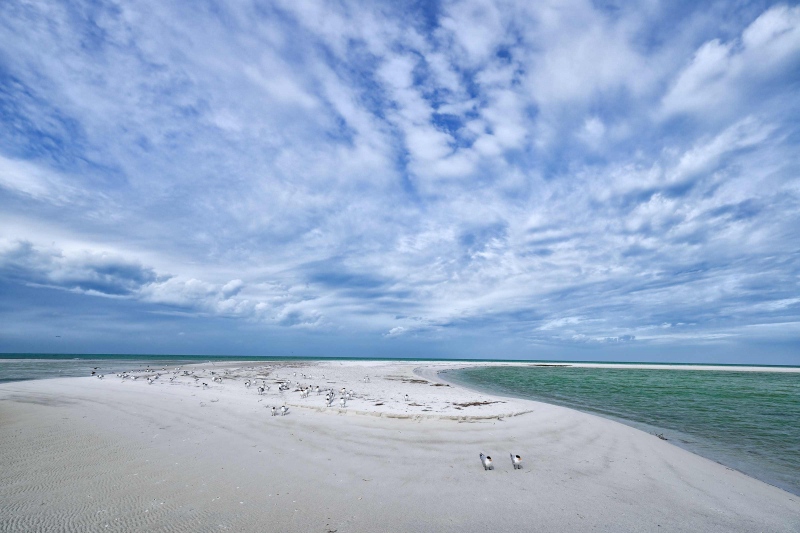
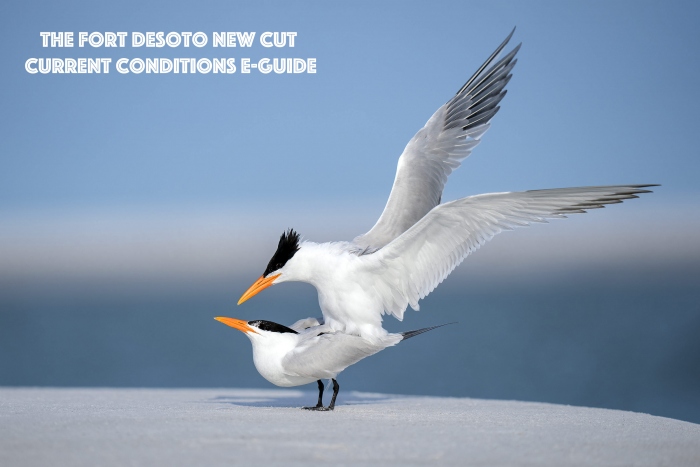
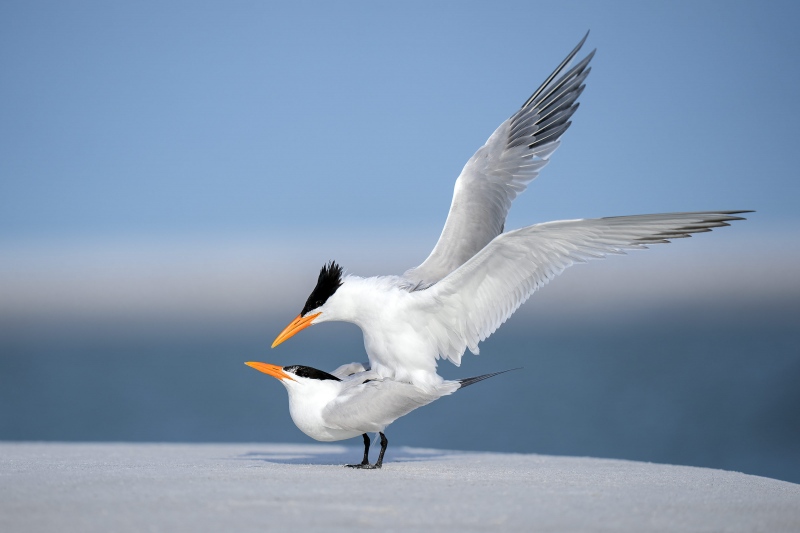
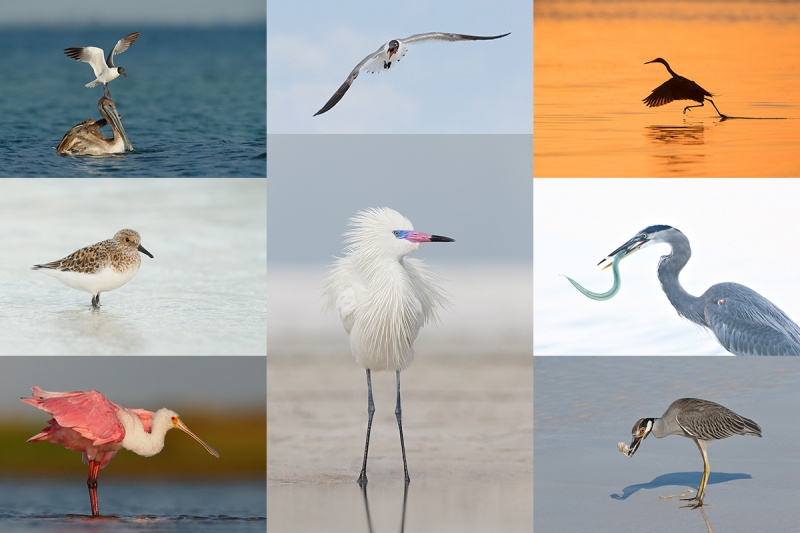
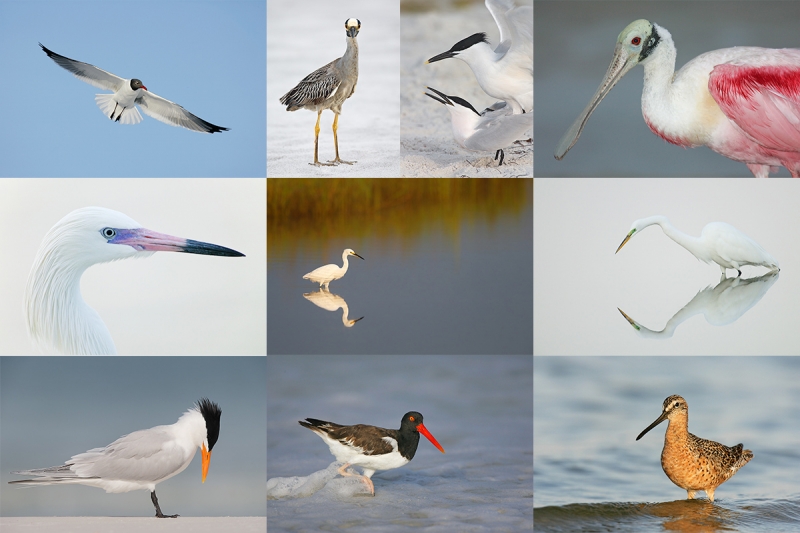
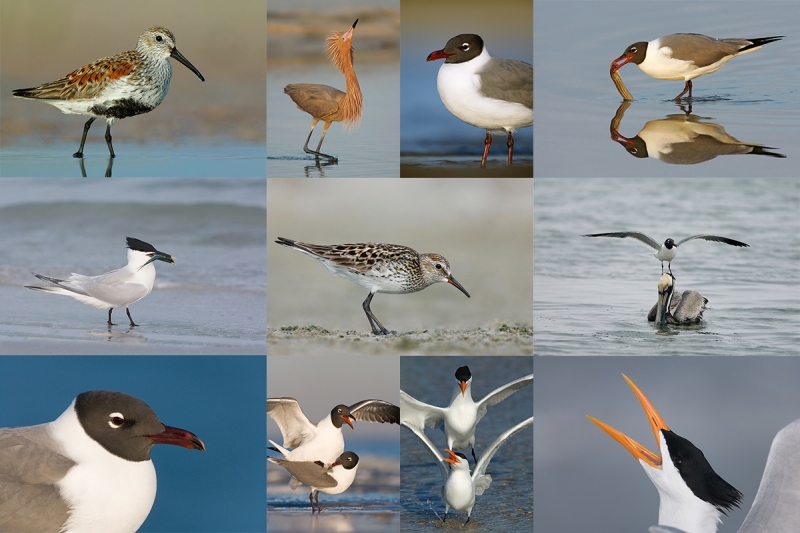
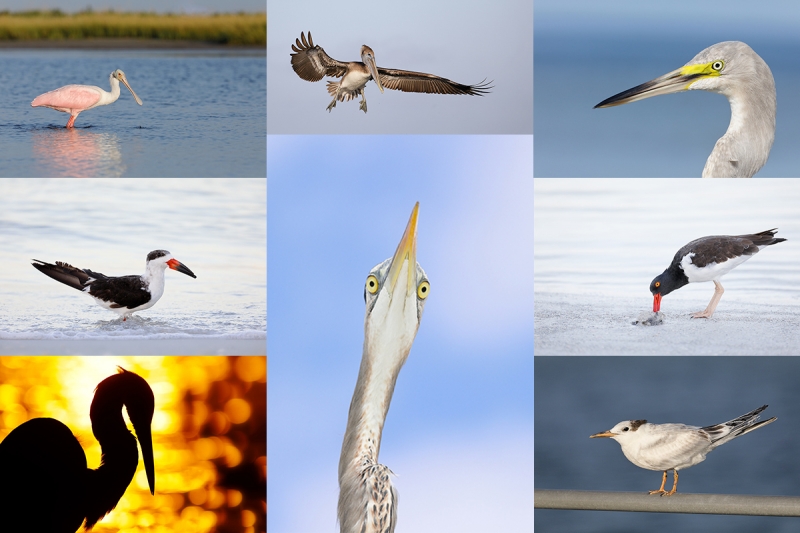













Love the video and stills. Gotta love the Far Bar – it’s the real deal.
Thanks for all of your help with this new hotspot.
with love, artie
Image #1 and #2 are interesting! And image #2 Royal Terns copulating is also funny!